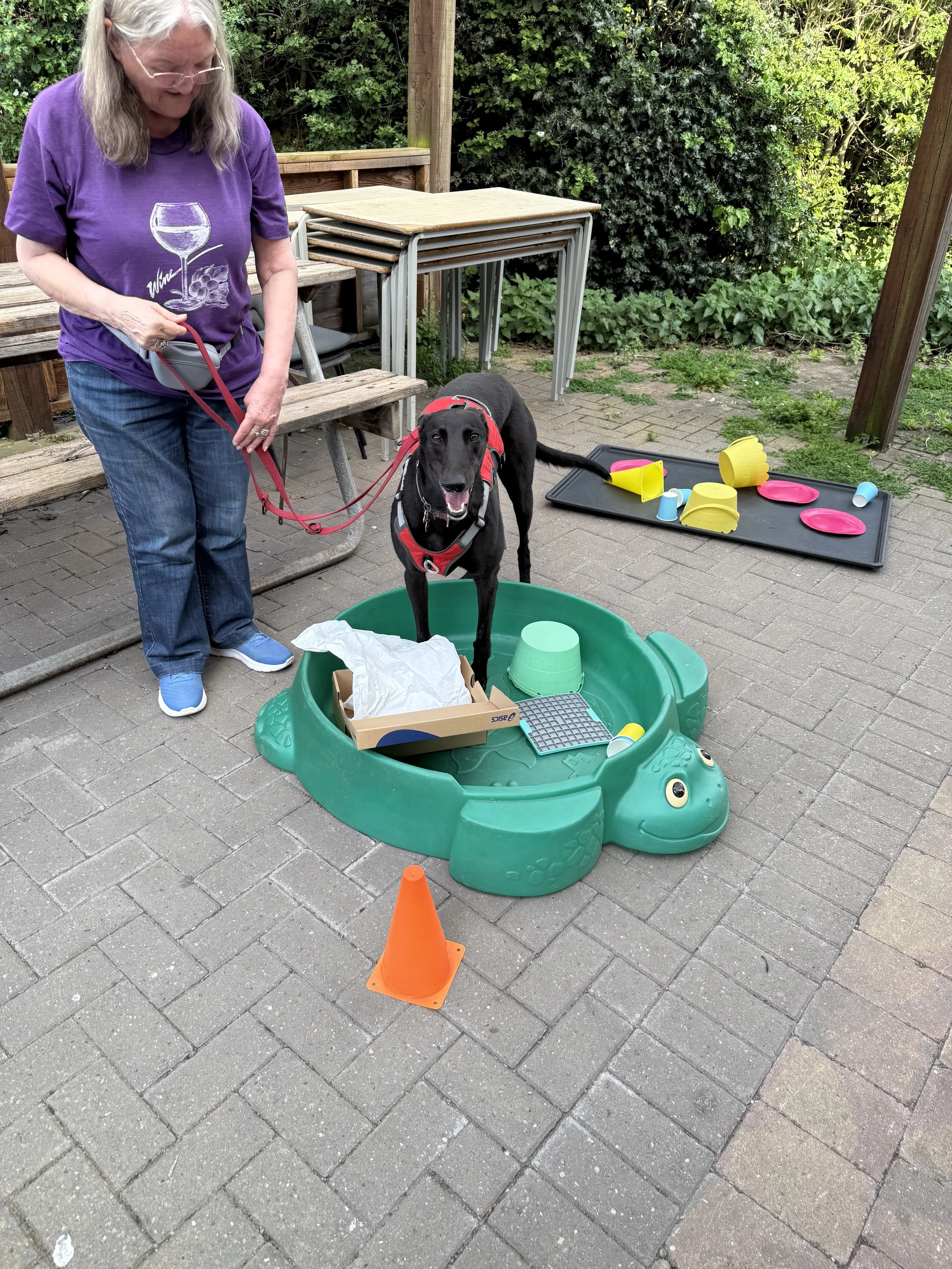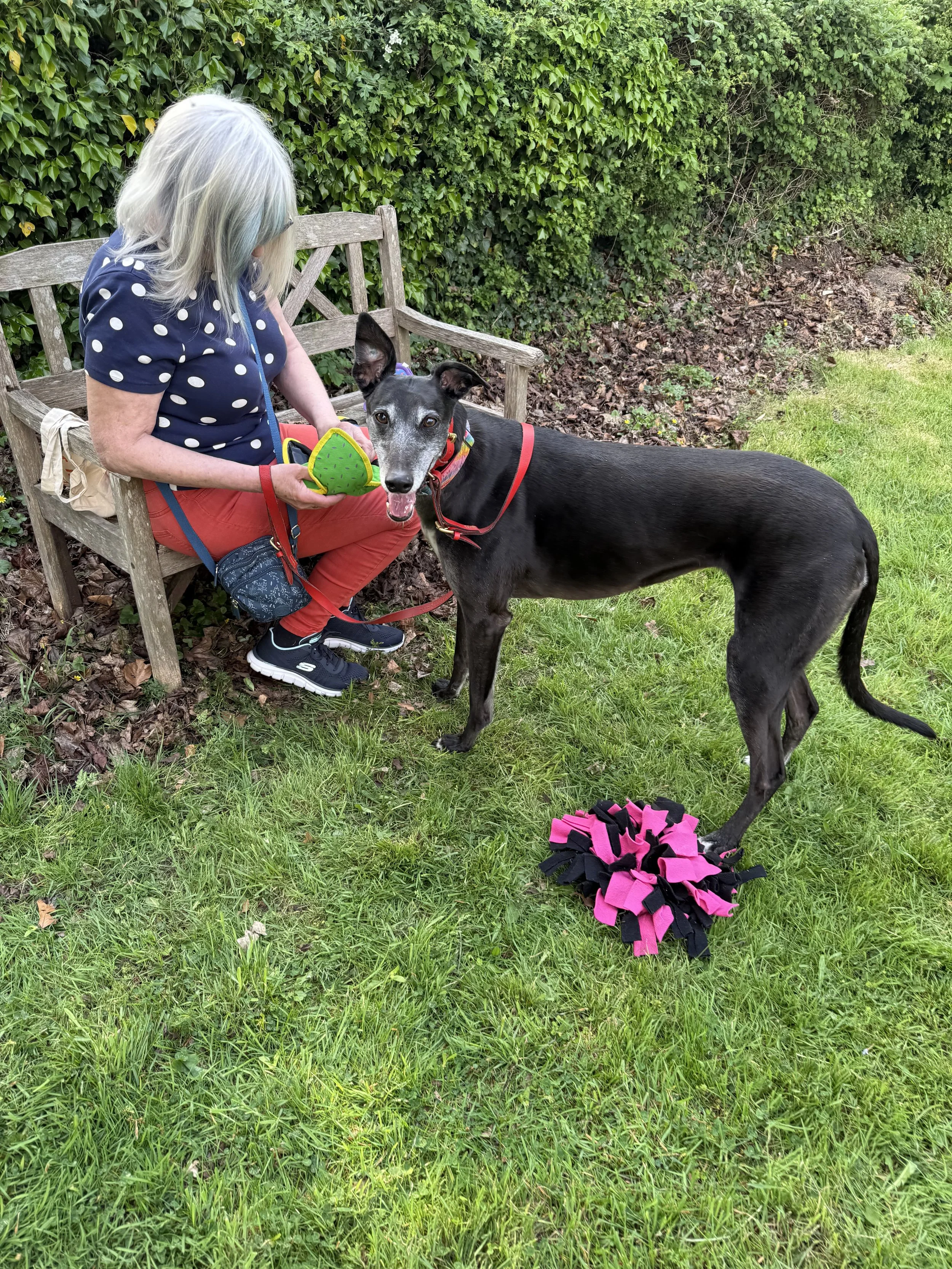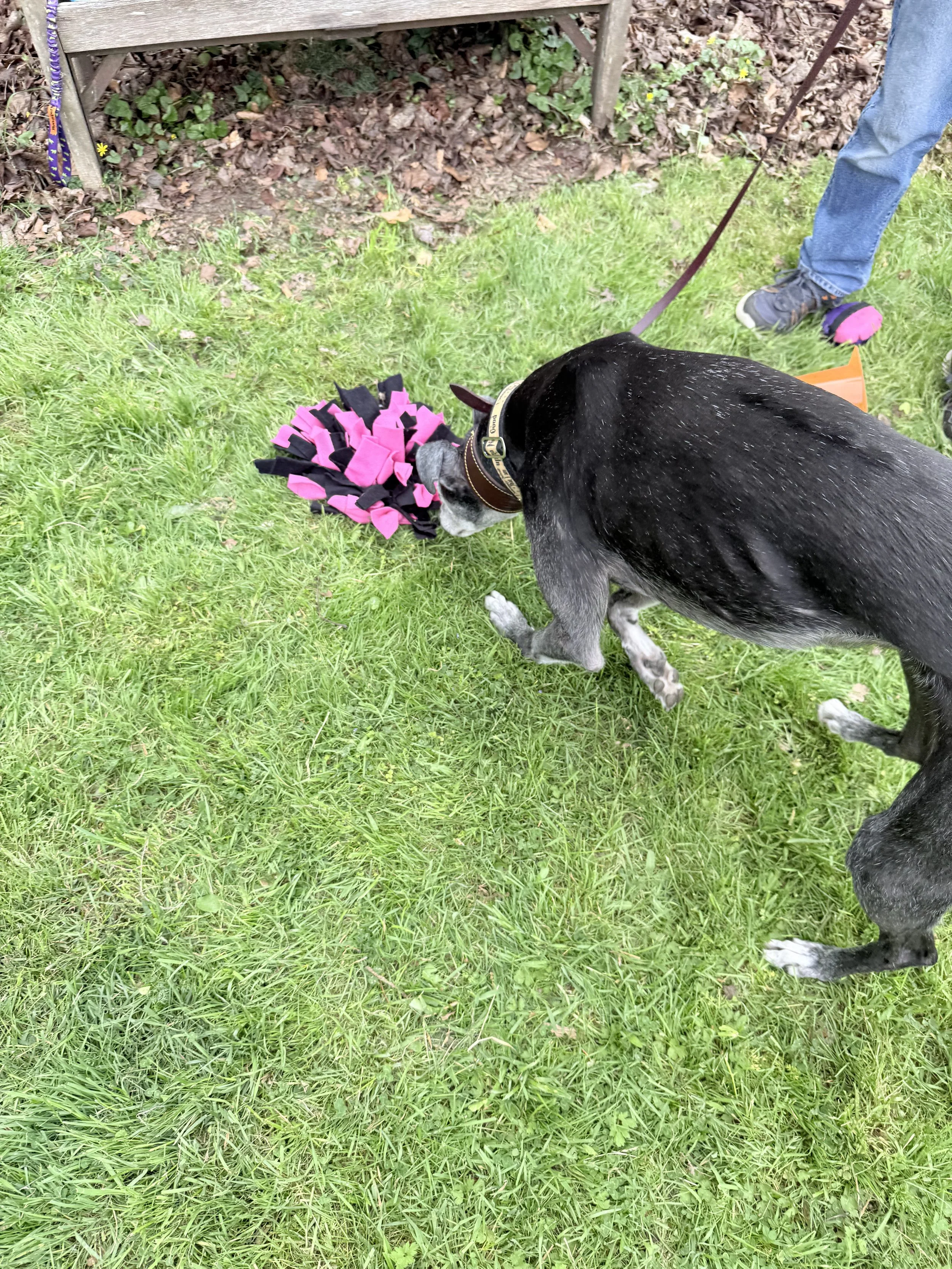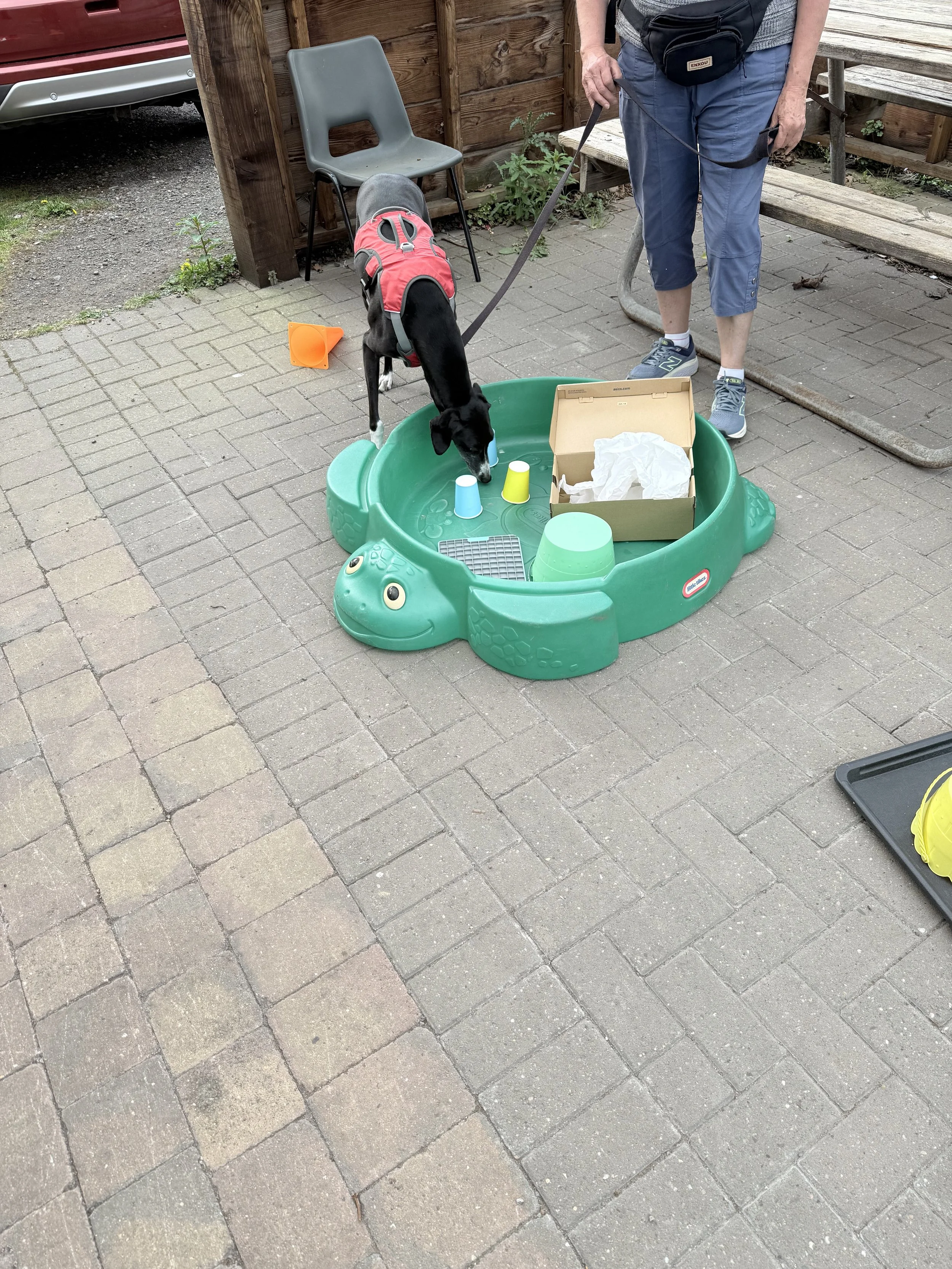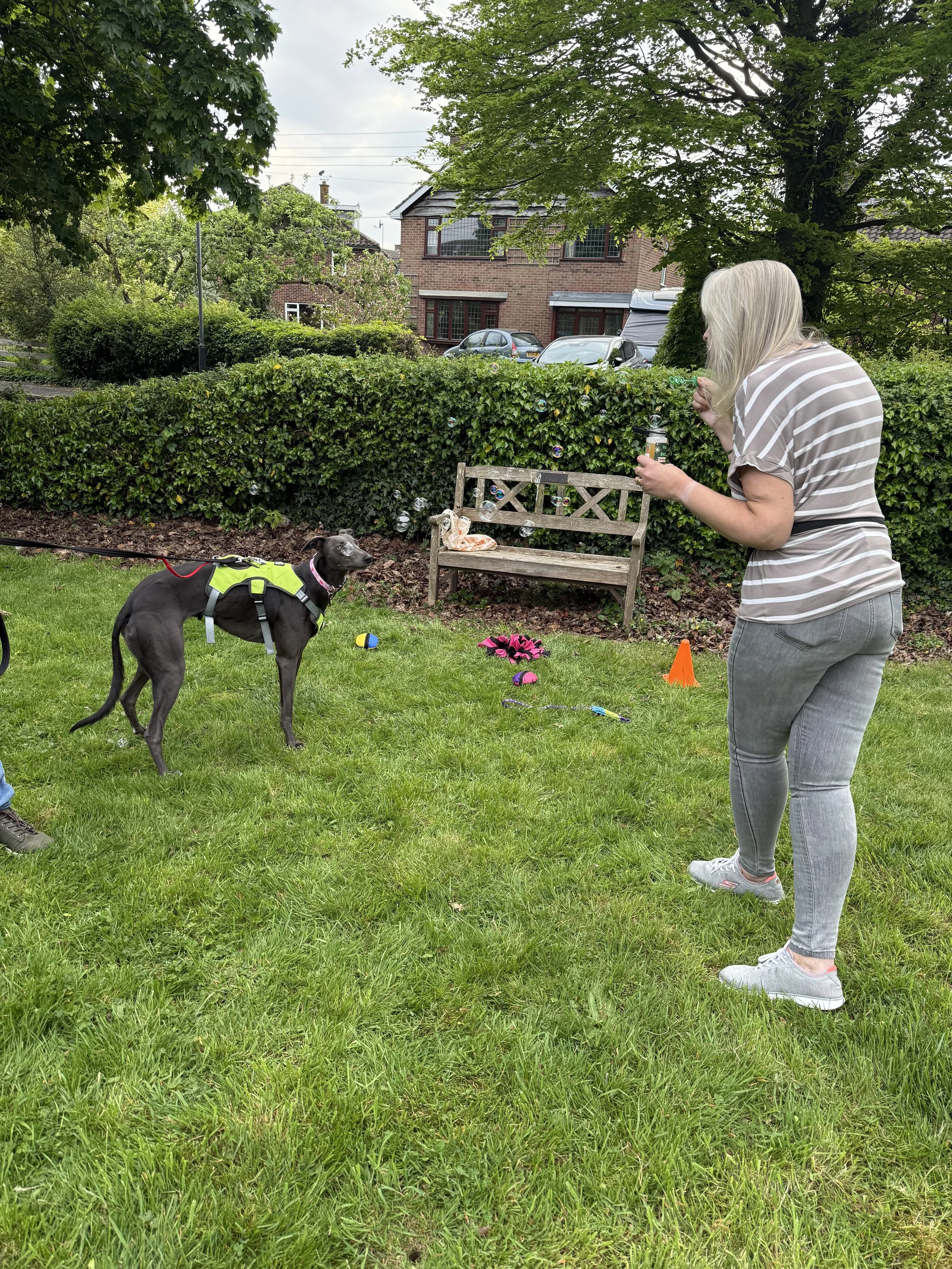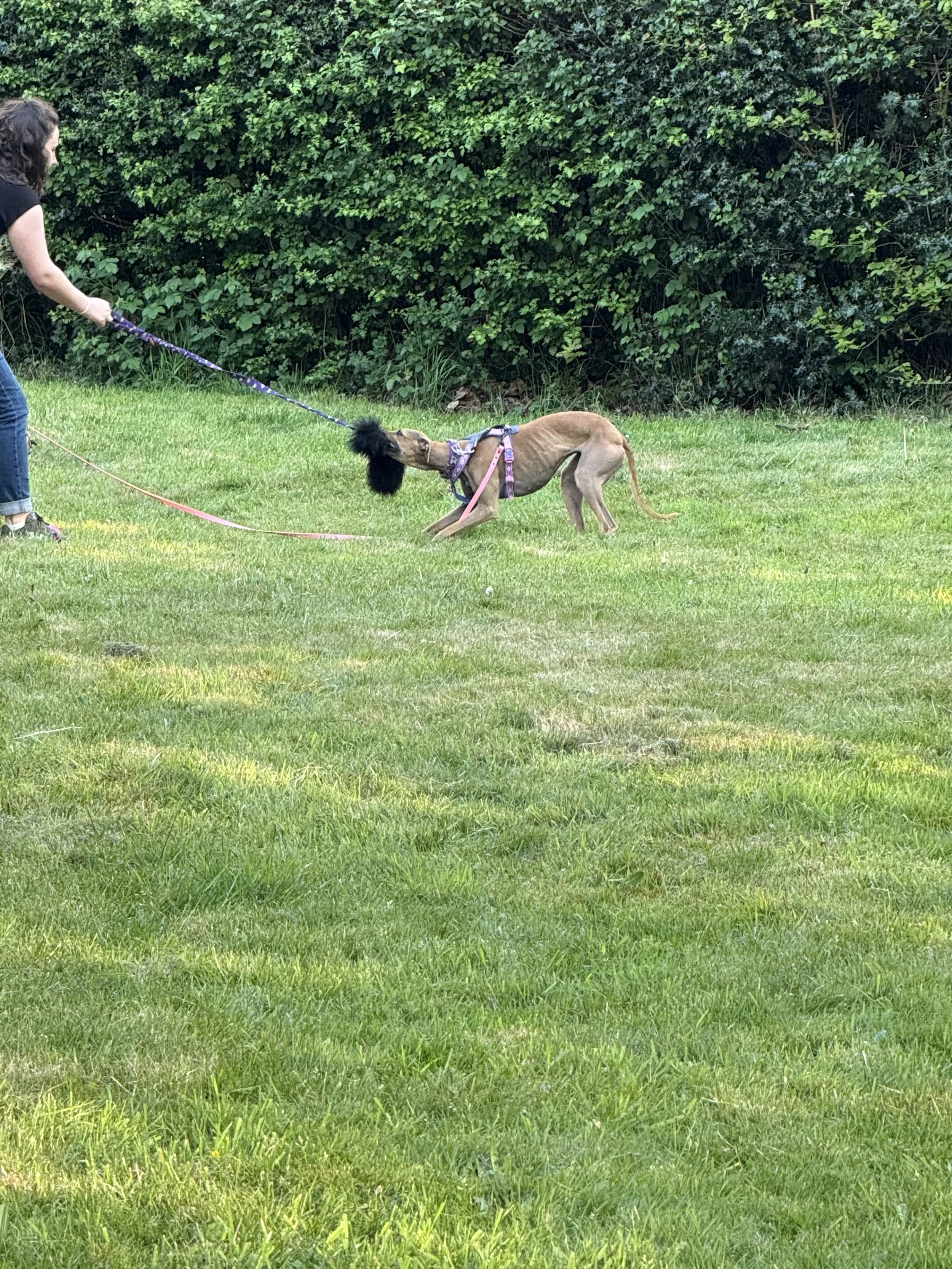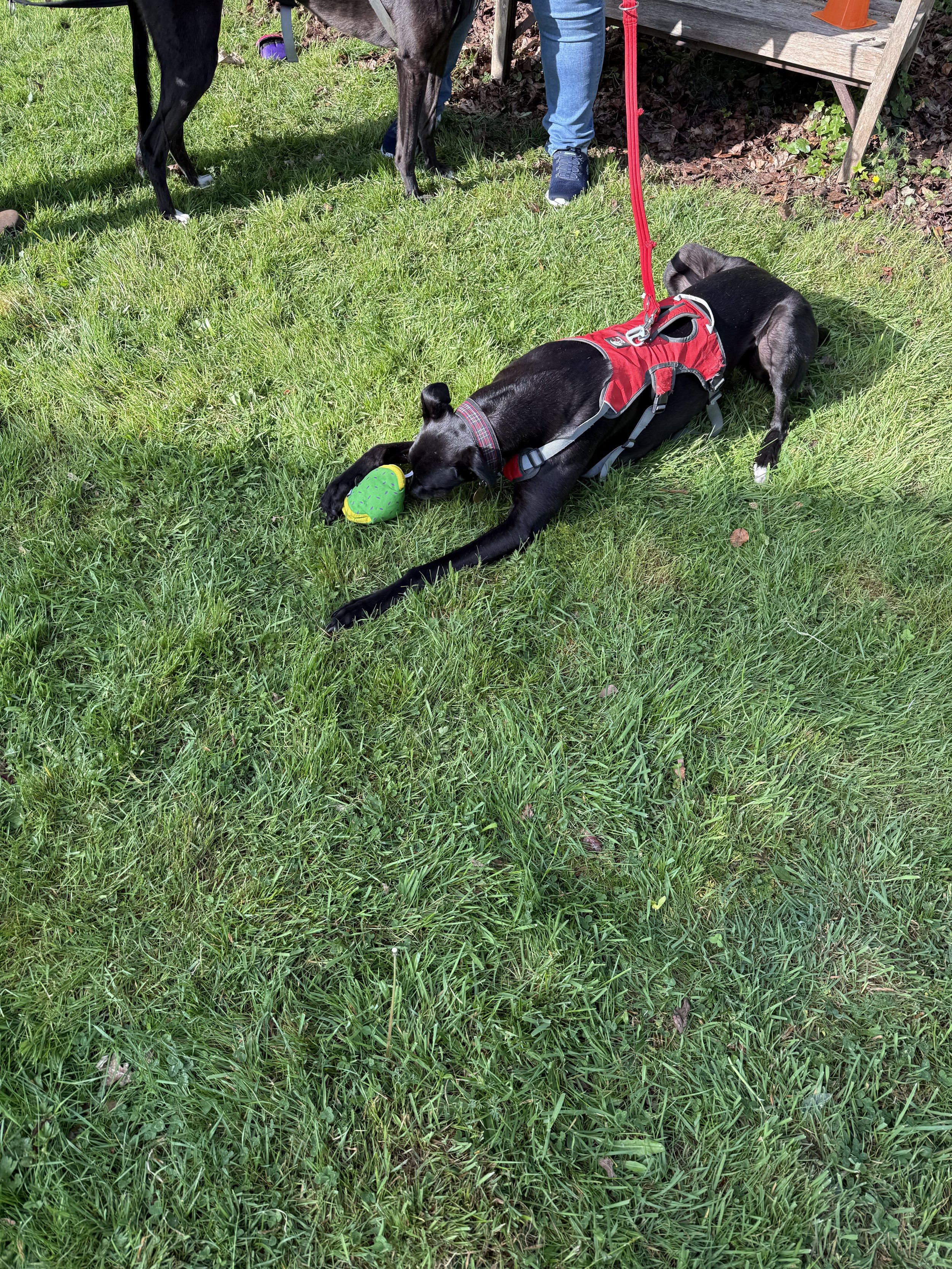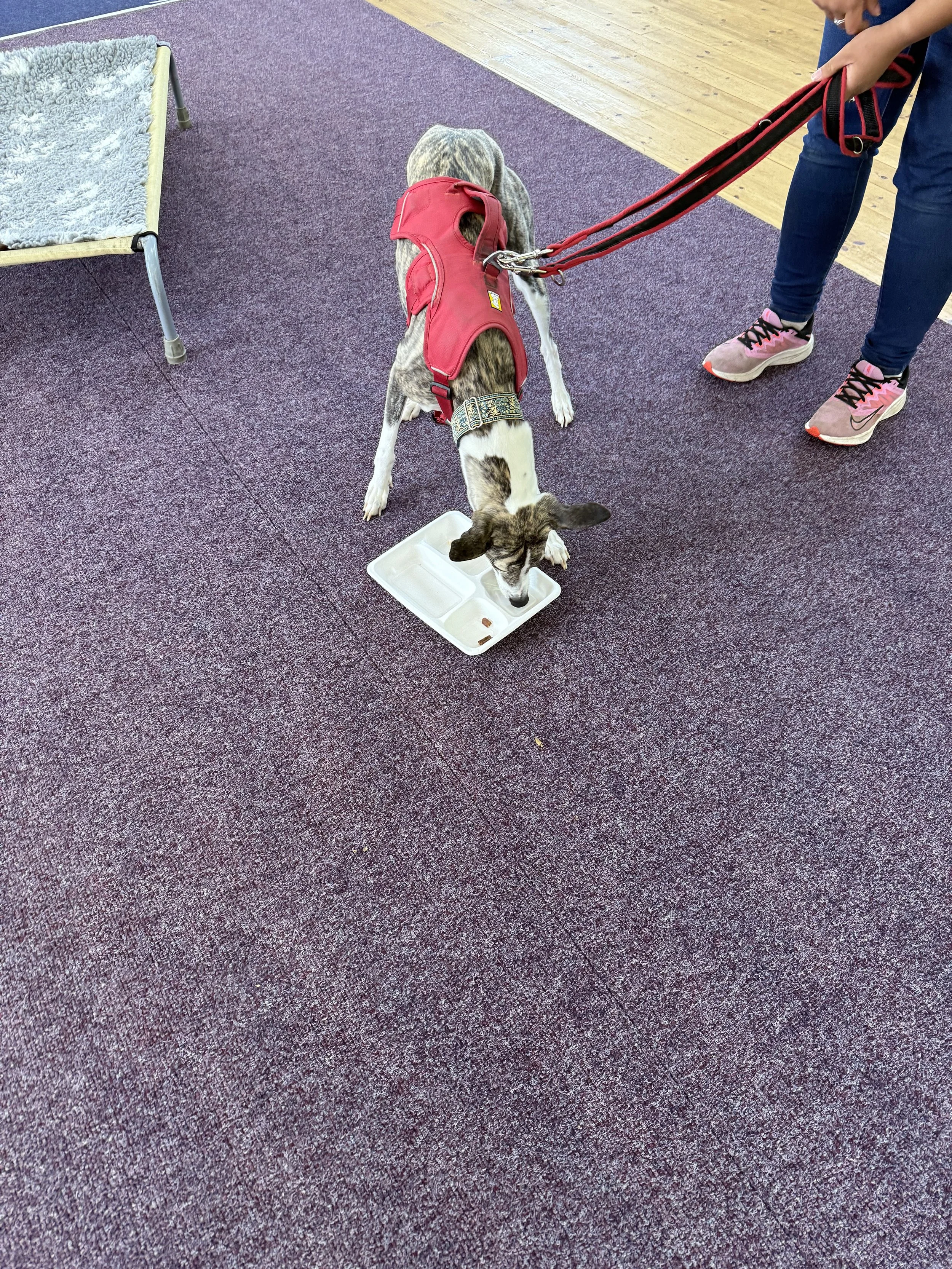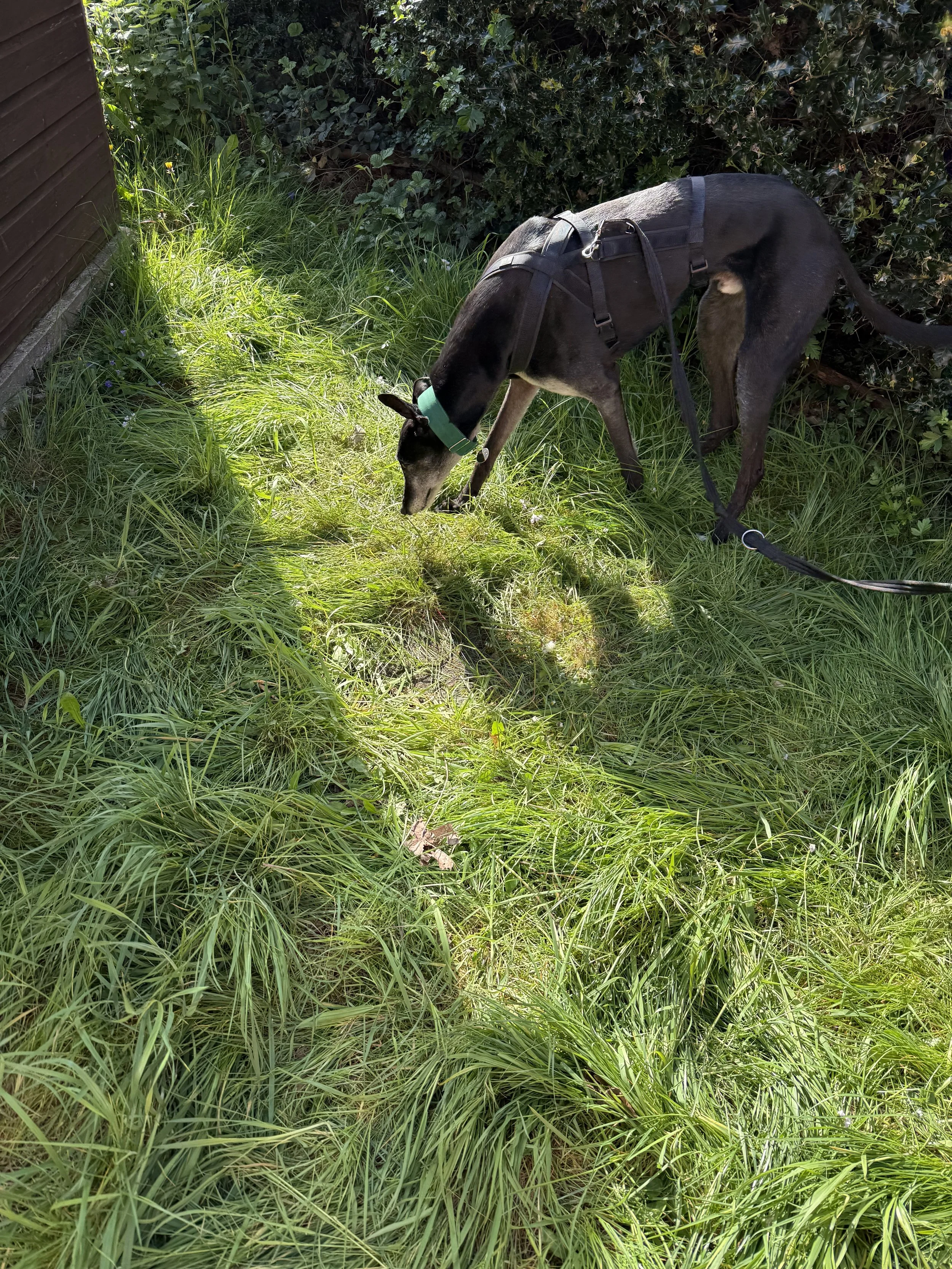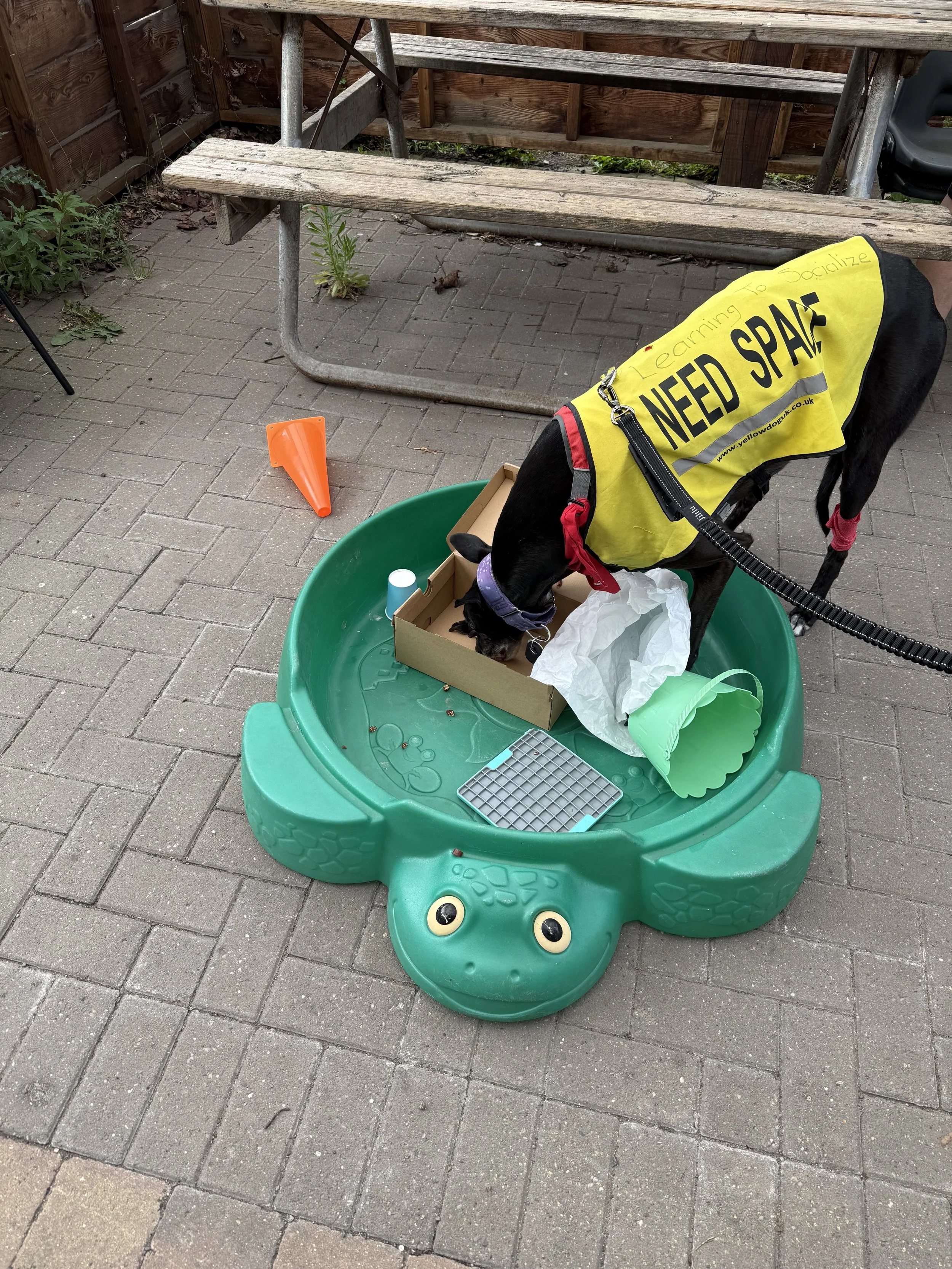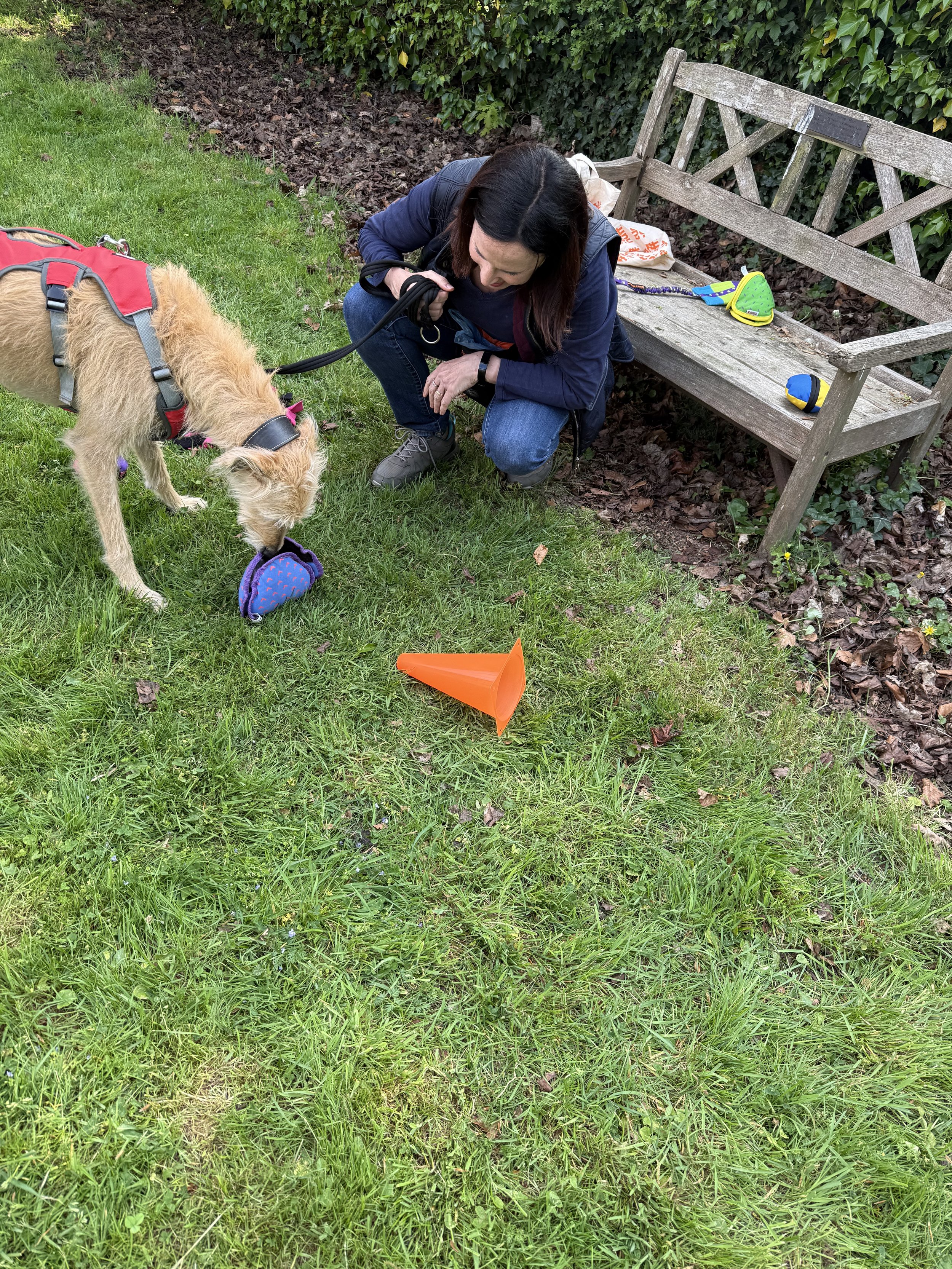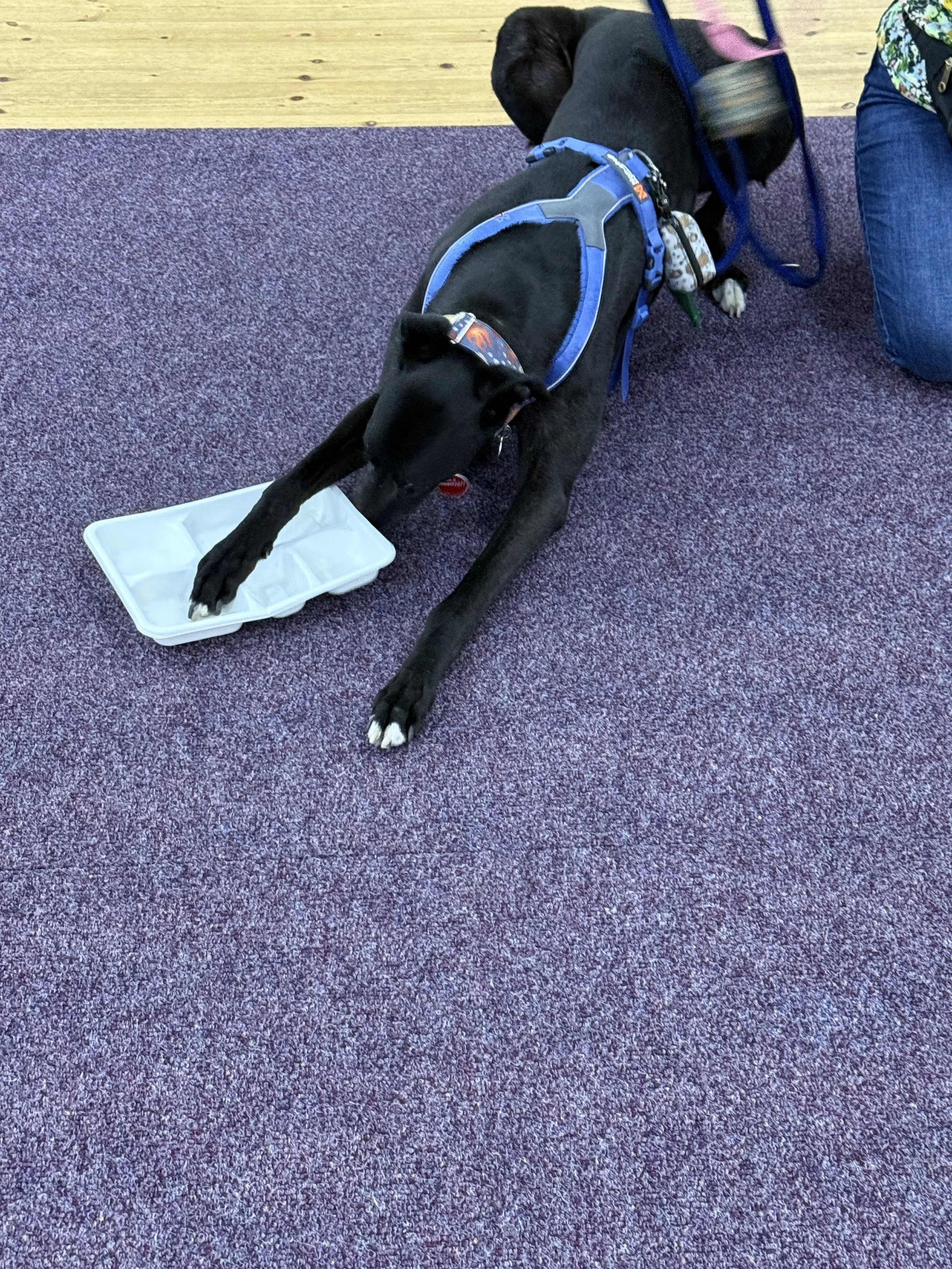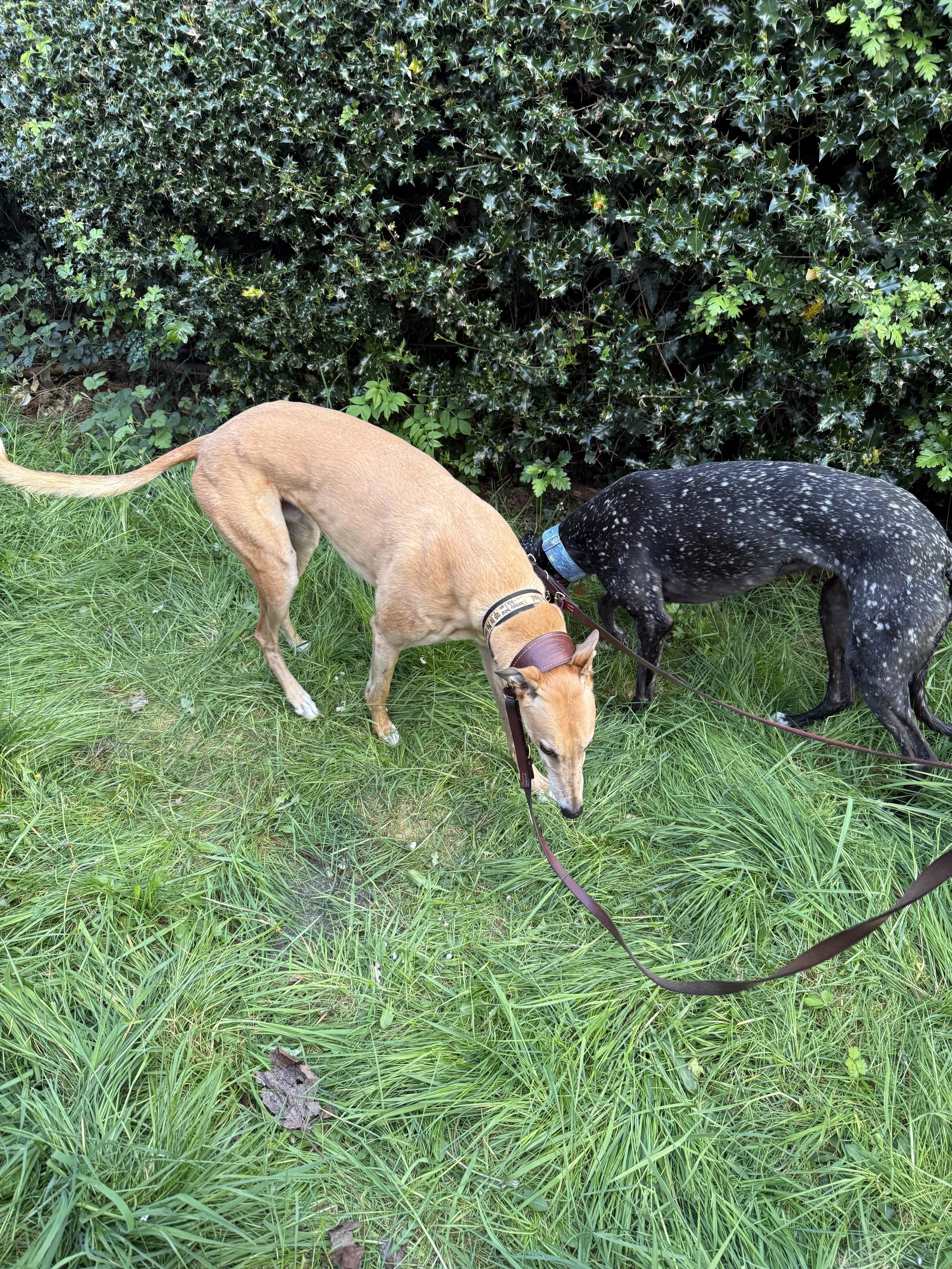Being Dog Detectives – What Really Motivates Our Sighthounds?
This week in class, we stepped into the role of dog detectives.
Not to solve a mystery—but to observe, gather information, and gently explore what really motivates our dogs.
We weren’t asking for specific behaviours or looking for ‘performance’. Instead, we created a relaxed, choice-led environment where each dog could show us what they were drawn to—no pressure, no expectations, just calm observation and thoughtful interaction.
When we give our dogs the chance to explore freely, we start to understand the subtle ways they communicate what matters to them. And that’s exactly what we did.
Why Motivation Matters
Understanding what motivates your dog is one of the most powerful tools you can have in training—and in everyday life. Just like people, dogs have their own preferences and values. Some are drawn to food, others to movement, scent, or connection.
When we learn what a dog finds reinforcing or soothing, we can use that knowledge to:
Build stronger trust and connection
Reduce stress and overwhelm
Shape learning that actually sticks
Support confidence-building in a way that feels safe
Make training more effective and enjoyable—for both dog and human
It’s not about bribing or luring. It’s about tuning in.
The more we understand the ‘why’ behind our dog’s choices, the better we can support them with kindness and clarity.
What We Set Up in Class
We designed a space that gave our dogs choice, freedom, and variety—with no single right answer. Here’s what was on offer:
Serving platters of food – A mix of soft, spreadable treats, crunchy bites, and something a little fishy. We noticed what they gravitated to, how they approached the food, and what felt ‘high value’ to them. We then served it again with different items closest to see if they went for the same or different.
Tug-E-Nuff toys – Chase dogs who enjoy movement and interactive play, different textures, styles.
Puzzle toys, Interactive toys and snuffle feeding – Great for curious, problem-solving minds.
Nature zone – Long grass, hedges, and natural surfaces for sniffing and decompressing.
Free work space – Textures and everyday objects to explore at their own pace.
Gentle human fuss – Noticing how dogs responded to touch—did they lean in or move away? What type of contact did they enjoy?
What We Learned
Every dog gave us a different story—and that was the most brilliant part.
It wasn’t just about whether they liked food or toys—it was about the details.
What kind of food did they find most valuable? Soft and spreadable? Crunchy and chewy?
When we offered the same options again but in a different position, did they pick the same one—or just the one closest?
Did they prefer the ball or the faux fur? Were long-handle toys more exciting than short ones?
With interactive toys, did they gravitate towards something familiar or were they keen to explore something new?
At each station, we tuned into their responses:
How engaged were they?
Did they get animated or thoughtful?
How was their body language?
Some dogs lingered over puzzle toys, showing quiet determination. Others lit up during chase play. Some moved through the nature zone with soft body language and calm, exploratory behaviour. There was also a few surpises with completely new preferences we hadn’t seen before.
Each dog was telling us something valuable—about how they felt and what mattered to them.
This wasn’t about ticking boxes. It was about recognising that how our dogs respond gives us insight.
How It Helps Training
When we train with this kind of insight, we don’t just get behaviours—we build a real relationship.
You’ll be able to:
Pick the right rewards for your dog
Reduce frustration and miscommunication
Spot early signs of stress or disinterest
Build a foundation for learning that feels safe, motivating, and kind
Get results that are meaningful and long-lasting
Gaining insight into our sighthounds helps us make kind, informed training choices that actually get results—results that work for you both.

